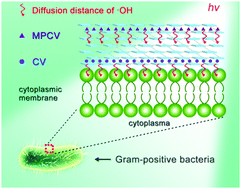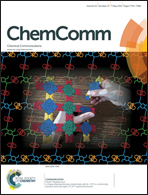A bivalent cationic dye enabling selective photo-inactivation against Gram-negative bacteria†
Abstract
A piperazine-modified Crystal Violet was found to be able to selectively inactivate Gram-negative bacteria upon visible light irradiation but left Gram-positive bacteria less damaged, which can serve as a blueprint for the development of novel narrow-spectrum agents to replenish the current arsenal of photodynamic antimicrobial chemotherapy (PACT).


 Please wait while we load your content...
Please wait while we load your content...